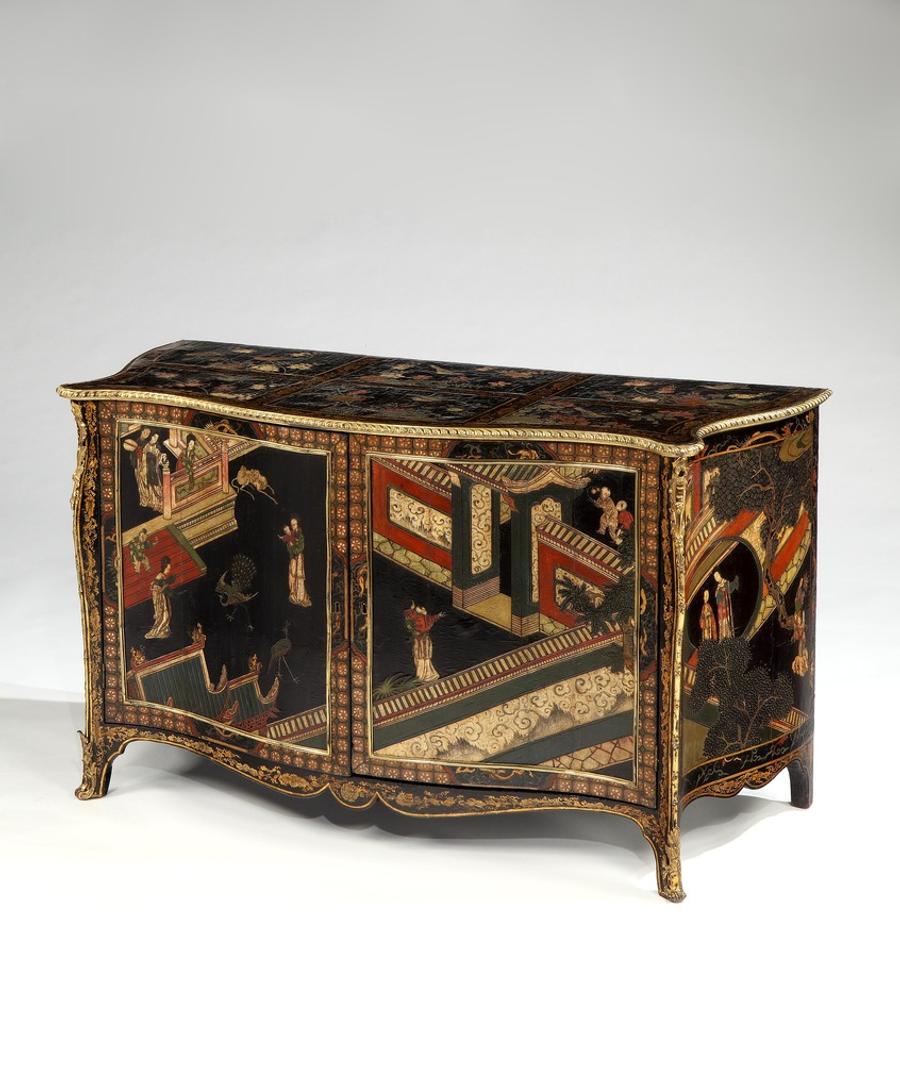Kentshire to exhibit the Ragley Hall Commodes at the International Fine Art and Antiques Dealers Show, October 25th-31st
A highly important pair of George III gilt-metal mounted coromandel lacquer veneered and japanned commodes attributed to Pierre Langlois will be exhibted by Kentshire at the International Fine Art and Antiques Dealers Show, October 25th-31st. The pair is of serpentine form, with variously decorated lacquer panels depicting oriental scenes of ladies and children within a courtyard of large pavilions, flowering plants, and rockwork, with ormolu mounts.

Kentshire
The Ragley Hall commodes were commissioned by the Earl of Hertford during the decoration of Ragley in the late 1750s and early 1760s. The commodes are in the French style as practiced by such émigrés as Pierre Langlois, and popularized by contemporary English and French pattern books. Coromandel lacquer is one of the rarest forms of decoration to be found on English furniture dating from the mid 18th century, surely because of the difficulties in applying its brittle form to the subtle curves of the French inspired rococo.
This pair of commodes belongs to a small group of similarly coromandel-lacquered commodes, including one from the collection of Sir Anthony Compton-Thornhill, Bt. A slightly smaller single commode from Ragley sold at Christieʼs in 1921. The mounts on all of these commodes are closely related to those found on a series of both marquetry and black and gold lacquer commodes which have been attributed to Pierre Langlois. Langlois (fl. 1759-81) was one of the most prolific and well known émigré French cabinet-makers working in London in the latter part of the 18th century. Langloisʼ elaborate gilt-metal mounts were almost certainly supplied by his fellow émigré Dominique Jean who shared his premises at 39 Tottenham Court Road until 1781.
The name ʻCoromandelʼ is taken from an area of European trading posts on the Indian coastal district, though the lacquered product was actually Chinese. Its main use was for screens, commonly decorated with terrace and riverside scenes, fantastic mythological beasts and birds amidst exotic flowers and trees. The screens were made from vertical panels of softwood which were thoroughly smoothed. After many layers of lacquer had been applied, the final stage was to carve out the detailed designs and add coloring with oil or lacquer pigments.
Circa 1765
31″h, 55″w, 24″d. 78.7 cm, 137.1 cm, 61cm.
Provenance: Commissioned by Francis Seymour Conway, 1st Marquess of Hertford (1719-94), for Ragley Hall, Warwickshire Thence by descent to the Trustees of the 5 Marquess of Hertford, offered Christie’s London, June 30, 1921, lot 26.
Frank Partridge Ltd.
Captain the Hon. Francis Cecil Brownlow (d.1932)
Thence by descent to his son Lt. Col. John Desmond Cavendish Brownlow, 5th Baron Lurgan (d. 1991).
Thence by decent and sold anonymously, Christieʼs London July 4, 1996, lot 300.
Literature:
P. Macquoid and R. Edwards, ‘The Dictionary of English Furniture’, London, rev. ed. 1954, vol. II, p.115, fig. 13
L. Wood, ‘The Lady Lever Art Gallery, Catalogue of Commodes,’ London, 1994, p.77, note 4.
Sotheby’s New York, January 23, 1993, Lot 255. A similar coromandel-lacquered commode from the collection of Sir Anthony Compton-Thornhill, Bt.












